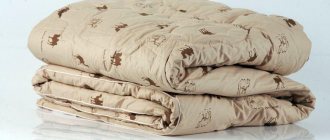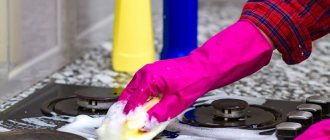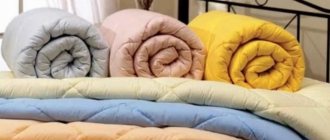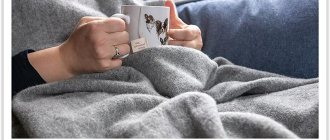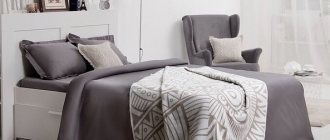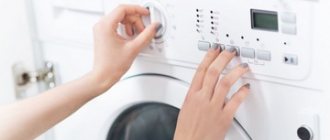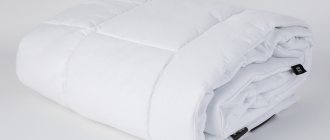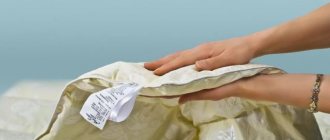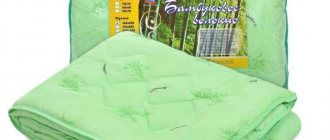Every loving parent wants to provide their child with the best, so before you buy any item for your child, you need to know everything about it thoroughly. Which blanket to choose for a newborn? The question is quite serious, because such a thing should not only warm the baby, but also be safe and comfortable. This article will tell you about all the main nuances of choosing this bed textile.
Which blanket is best for a newborn's crib?
First of all, parents must take into account one important fact - the time of year when the child was born. Depending on this, the choice will be different blankets:
- If it is cold autumn or winter, then the following options are suitable for the child: cotton, down, wool or fur blankets.
- If it is a warm spring or summer, then it is better to buy a blanket made of thin fleece or flannel. A nice wool blanket will also come in handy.
At the same time, young parents should understand that when buying a blanket for the summer, they will also have to buy a second one for the winter, and vice versa. Therefore, do not delay your purchase; it is better to buy the necessary set of blankets right away.
Types of blankets
Star
There are several types of baby blankets, varying depending on how old the child is.
Types of quilted baby blankets:
- envelope. Accessory for newborns. Serves not only for sleeping, but also as clothing. The convenient shape allows you to quickly dress and undress your child without unnecessary temperature fluctuations.
- The choice of envelope depends on the season. Demi-season ones are made of one layer; for winter it is preferable to buy two-layer products (one layer of fur, the second of water-repellent material);
- transformer. For a growing child. Blanket in the shape of a bag. The baby lies in it freely, but not open. The main advantage of this children's product is that parents do not have to constantly get up at night to cover their child. The accessory will provide reliable protection from drafts;
- a blanket for walks in the fresh air when it’s cool outside. Can also be used as a sleep accessory for children under 3 years old;
- An ordinary baby blanket is bought for a child from the beginning of the second half of the year.
How to choose a baby blanket? Primary requirements
A newborn does not have its own immunity, so increased demands are placed on such products. The first blanket for a baby must have the following qualities.
- Breathability. Bedding for infants should only be made from breathable materials. Even a less active child can wrap a blanket around himself while sleeping, so for safety reasons the product must be well breathable.
- Hypoallergenic. In the first days and months of a child's life, it is very difficult to predict which materials may cause allergic reactions in him. For this reason, the blanket should be made from environmentally friendly materials; it should not attract dust, mites and create favorable conditions for the development of fungi and mold.
- Hygroscopicity and thermal conductivity. The child’s body, unlike the adult human body, is not able to adapt to the ambient temperature. To prevent a newborn from sweating during sleep, from freezing or overheating, his blanket should have the ability to absorb evaporation from the skin as quickly as possible and remove it outside, while remaining dry.
- Light weight and soft. The baby's skin is very sensitive, so it should not be damaged by the dense, strong and rough material of the blanket. In this case, it is better to choose a blanket for a newborn that will be pleasant to the touch and that will not put pressure on the baby.
- Easy to care for. To maintain the hygiene of products that surround the child, they should be washed and washed regularly. This applies to blankets, so it's best if the item is machine washable.
What are they?
All children's blankets can be divided according to several characteristics: according to the composition and density of the filler, according to the composition of the cover, and according to size. To understand which product is right for your baby, let's discuss each of the characteristics in more detail.
- Composition and density of the filler. Today, it is customary to divide fillers into three main groups: natural (wool, down, silk), artificial (bamboo, eucalyptus, aloe vera), synthetic (artificial swan down, padding polyester, holofiber). In turn, according to their density, blankets are divided into lightweight and warm. I would like to note that it is more practical to have two blankets (light and warm) so that the child feels comfortable both in summer and winter.
- Composition of the case. The cover is just as important an attribute as the filling. It can be made of artificial (polyester, microfiber) or natural (cotton, linen) fabric. In principle, both natural and artificial materials can be used for children, it all depends on the baby’s allergic reaction. If the child does not have allergies, and his personal doctor does not prevent him from buying a blanket made of natural material, then feel free to use it; if allergies are present, then opt for artificial and synthetic materials.
Sectional view of the blanket. - Blanket sizes. The standard size of children's blankets is 110x140 cm. Many parents doubt it and consider it too large. I assure you, this is not so. The size 110x140cm is perfect for standard cribs. The main advantage of a blanket of this size is its versatility; if the baby is very small, then you can easily tuck it under the mattress without creating difficulties for the baby’s restful sleep. But when the baby grows up, you will not need to buy a new blanket. As for teenage children, a single size is suitable for them.
Which blanket is best for a newborn in winter?
Let's consider the best options for children's blankets that can warm a child during the cold season.
Pooh
. This material is used as blanket filler for people of all ages.
Advantages:
- It is characterized by lightness, good breathability, and remarkably warms.
- It is recommended to use such a blanket in rooms where the air temperature does not exceed +16-+18 degrees.
Important! If the room temperature is higher than specified, there is a possibility of the baby overheating.
Flaws:
- This filler is susceptible to infection by feather mites, the activity of which can provoke severe allergies in a child.
- A product with down requires periodic drying, as it absorbs moisture well.
Cotton
Another popular filling for blankets for newborns is natural cotton and cotton wool.
Advantages:
- Cotton is a hypoallergenic material, so there is no need to worry about any problems associated with the child's reaction to the filling.
- This blanket is capable of excellent heat retention, preventing the child from overheating.
Flaws:
- The fairly noticeable weight of the blanket can create some discomfort for the baby.
- Over time, the batting may clump. Such blankets will end up being uncomfortable - they will lose their thermal properties and eventually become unusable.
- Cotton is good at absorbing moisture, so this product also requires periodic drying.
Wool
Woolen products can be of two options: in the form of a blanket and in the form of a bedspread. When choosing a blanket for a newborn from this material, you should give preference to a quilted wool product.
Advantages:
- This blanket is light weight, so it will be comfortable for the child.
- Wool keeps warm very well, so parents should not worry that the baby will freeze at night.
- A child can use this product for about 8 years or even more. Throughout this period, the blanket will not lose its thermal characteristics and beautiful appearance.
- Under such a blanket, the baby will not sweat, since the material is hygroscopic and evaporates moisture well.
- The wool blanket has good breathability.
Flaws:
- A significant disadvantage of wool products is the allergic nature of the material.
Important! If after the first night a child spends under such a blanket, he develops a rash or other manifestations of allergies, then the woolen product cannot be used in the future.
Synthetics
Many parents refuse to purchase synthetic products, preferring only natural materials for their baby. However, in cases where a newborn suddenly develops an allergy to filling, such as down or wool, a synthetic blanket is an ideal replacement.
Advantages:
- Products with synthetic filler are quite easy to care for. This item can be washed in a washing machine.
- The weight of the blanket is light, so the child will be comfortable under it in this regard.
Flaws:
- Synthetics do not allow heat to pass through, so it can be quite hot for a baby to sleep wrapped in such a blanket.
Bamboo
This blanket is perfect for a newborn, but it also has its downside, which is very important for many parents.
Advantages:
- The bamboo blanket is thin, pleasant to the touch (silky), and perfectly maintains a temperature that is comfortable for the baby’s body.
- The service life of such a product is quite long, the blanket is durable and reliable.
- The blanket is hypoallergenic and antibacterial, which is very important for the baby’s sensitive body.
Flaws:
- The only drawback is the high cost of the blanket. Not all parents will be able to buy such a product for their child without significantly emptying their wallet.
What blanket should I buy for my baby for the winter?
For the winter months, even in well-heated apartments, choose a baby blanket with thick filling.
Goose, duck, eider down, or a combination of duck and goose down are used as fillers. Interesting!
The extraordinary lightness of a duvet is not the only advantage, especially if the duvet is intended for infants. It also has good breathability, retains heat, maintains a good microclimate, and absorbs moisture.
As for caring for a duvet, everything is without complications - airing several times a year and drying in the sun. An ideal choice for the winter period, of course, if you are not allergic to feathered down. The duvet is suitable for children of all ages due to its lightness.
Wool blanket for baby
Wool blankets are the second most popular item. The blanket is made in two variations:
- woven wool blanket;
- blanket with wool filling.
The second option is suitable exclusively for the winter months, but the woven product can be used even in the summer. A woven product made of wool is dense, which makes it heavy, but a blanket with down filling has practically no weight.
Wool has positive characteristics: it allows air to pass through well, retains the microclimate, it is warm, and evaporates moisture well. Wool material has a beneficial effect on joints and blood circulation. There is a downside to wool blankets - the ability to cause allergies.
Blankets made from camel down and camel wool are in great demand. The parents' question: “Is a camel blanket good for a child?” can be answered with a statement.
The blanket is distinguished by its lightness, softness and healing properties, which have a beneficial effect on the human spine and the circulatory system. Camel wool contains lanolin, which has additional healing properties.
Interesting!
Blankets are made from camel wool or down. Wool filling is warmer and lighter. A blanket made of camel down is practically not felt, it is so weightless, and its softness gives a pleasant tactile sensation.
Blankets and rugs are made from alpaca and sheep wool. Such blankets are characterized as light, warm, maintaining a healthy microclimate in the bed.
Caring for a blanket made of camel hair and down is not difficult. It is enough to air it several times a year, wash it by hand, and dry it horizontally on a straight surface. Dry cleaning is permitted.
Cotton blanket
A cotton blanket, which is based on cotton, has a fragile structure that is easily damaged. At the same time, the cotton wool gets into clumps and the process of air permeability is disrupted. The blanket is not considered to be fluffy, but it is machine washable.
Synthetic blankets
Synthetic options made from holofiber and padding polyester are distinguished by their low weight and increased ability to maintain temperature. Hygroscopicity is low; while sleeping under such a blanket in winter is good, in summer it is simply unbearable.
Which blanket to choose for a newborn's crib in the summer?
A summer blanket should be breathable, light, soft and easy to care for. The most popular options for such products are the following.
Bike
Products made from yarn are well known to our grandmothers, as they wrapped our mothers and fathers in the material. It is not surprising that the material has retained its popularity to this day, because its merits are undeniable.
Advantages:
- The blanket is soft, light in weight, and can quickly take the shape of a child's body, providing comfort while sleeping.
- The product allows air to pass through perfectly, so the baby does not sweat and does not develop diaper rash.
- The flannel blanket is hypoallergenic.
- Under such a blanket you will be warm even on the coolest summer or spring evenings.
- The product does not require special care, so it can be easily washed with baby laundry detergent or regular laundry soap.
- The appearance of the product can vary greatly. You can choose colors for girls and boys.
- The durability of the flannelette blanket and its affordable price are the main advantages of this version of the product for bedding for a newborn.
Calico
If one of the important criteria for choosing blankets for newborns is natural material, then you can safely give preference to a blanket made of calico.
Advantages:
- Ease,
- This blanket is made from environmentally friendly materials, so it is safe for the baby’s sensitive body.
- It has a low degree of creasing, so it retains its beautiful appearance even during intensive use.
- Strength. A calico blanket can retain its original pattern for several years.
Fleece
This material is a synthetic knitted fabric. She has become a part of our lives because she is practical. When it comes to choosing a fleece blanket for your baby, there are pros and cons.
Advantages:
- The fleece blanket is almost weightless.
- The material is hypoallergenic.
- A fleece blanket does not require special care, is easy to wash and dry quickly, and does not undergo biological degradation over time.
Flaws:
- The material quickly accumulates dust, which can cause an allergic reaction.
Blanket sizes for newborns
When choosing a blanket, you should also consider the size of the product. Many parents focus on the size of a children's mattress (with a small margin). Which blanket for newborns should you choose for a crib? Its classic dimensions for a children's bed are 60/120 cm. This option is possible, but excludes multifunctionality. You will not be able to wrap your child in such a blanket when going for a walk. Take a closer look at products in the size range from 100x80 to 110/140. They will allow you to wrap up your newborn and will last longer than their miniature counterparts. If you plan to have two blankets, which makes sense (if one gets dirty, you can use the second), then they can be of different sizes. Decide for what purposes you will use the product. Then it will become clear what size blanket for a newborn is best for you.
How to choose a baby blanket for warmth?
Very few modern parents know that the thermal characteristics of any blanket are indicated on its packaging. This is done using dots. Let's see what exactly does the number of dots on the package mean?
- 5 points. This label indicates the highest level of warmth of the blanket.
- 4 points. Simple, comfortable, warm blankets have this designation.
- 3 points. A blanket designed for spring or autumn.
- 2 points. Lightweight blanket for standard home temperatures.
- 1 point. This blanket is only suitable for the warm summer season.
Important! To buy a truly safe product for your baby, ask the seller for a quality certificate. It must be on any product sold in the store. If there is no certificate, then it is better to refuse to purchase this product.
Thin blankets for the summer season
Let's look at the varieties offered by manufacturers depending on the age of the child. It is worth noting that choosing a blanket for a newborn has its own nuances and characteristics.
- Envelope. The first blanket for babies is an envelope. Or rather, it serves not so much as a sleeping accessory, but rather as clothing, because its convenient design allows you to quickly dress and undress your baby, avoiding temperature fluctuations. The seasonality of its use will help you choose a suitable envelope. In the demi-season, single-layer ones are suitable, while in winter you will need at least two layers: fur and water-repellent.
- Transformable blanket for a growing baby. The design of this sleeping accessory has the shape of a bag, which allows the baby to feel freedom without being exposed. The advantage of such a “cocoon” is that parents do not need to get up at night and cover the child. For little ones who like to sleep in the fresh air, such a transformer will help avoid drafts.
- A blanket, as a type of blanket, is used for walking in a stroller in the fresh air during the cold season, and can also be used as a bedding for children under 3 years old.
- A blanket in the usual meaning of the word can be introduced into a child’s everyday life from the second half of life.
Before choosing a blanket for your child, you should first familiarize yourself with the possible filling options.
Materials used as filling for children's blankets are the same as those used for adults. Which blanket is best for a child, which one to give preference to is decided by parents, having previously analyzed all the pros and cons of each.
Natural
The cotton filler used in the budget range is natural, but a bit heavy. Cotton wool absorbs moisture well and retains heat, which is an advantage of this material. Among the disadvantages are poor breathability, the ability to absorb and retain various odors. You can buy it as a backup option, but do not use it constantly.
Covering children under three years of age with a cotton blanket is not recommended. If the goal is to choose a wadded blanket for an older child, then it is better to give preference to quilted options.
Blankets made from camel, sheep, goat, merino or alpaca wool, which have high thermal conductivity and hygroscopicity, will perfectly warm him without making him sweat. This option is suitable for babies from the first years of life, when heat transfer control is so important.
Down filling provides excellent warmth during the cold season, but can cause an allergic runny nose or cough in a child. The warmest of the entire range offered are “down jackets”, which contain the down of waterfowl: loons, swan, goose. They retain heat well and have good breathability. The advantages also include softness and durability.
But, despite the numerous advantages, you should refrain from purchasing them for children prone to allergic reactions. The reason for this is not the fluff itself, but the bed mites that grow in it after prolonged use. In this case, it is better to buy a blanket made of synthetic fiber or bamboo. Also, down ones are not recommended for use by children under two years of age, thereby avoiding overheating.
Bamboo occupies a leading position among natural fillers. Due to the antibacterial substance it contains, the development of bacteria is practically excluded even after fifty washes. High thermal conductivity allows you to cover yourself with a bamboo blanket in any season. Choosing its size is not difficult: the length of the bed plus a small margin for the volume of the product.
Silk is an elite and one of the best fillers. It does not accumulate dust, does not harbor mites, and fully meets the requirements of children prone to allergic reactions. Among the undeniable advantages are high wear resistance and hygroscopicity.
Its high price is fully compensated by its quality characteristics and long service life. But the material is quite difficult to care for and must either be ventilated or carefully washed with special products. In addition, such a product does not “like” people jumping or running on it, while the favorite place to play for most small children is the bed.
Synthetic
There is no clear answer as to which blanket is optimal for children. After all, you also need to take into account the temperature in the children's room. If it is cool, then the choice is made in favor of down or wool, but if it is warm and the child is prone to allergies, then it is better to give preference to a synthetic filler.
The choice of synthetic fibers for bedding is very wide, the most common are: synthetic winterizer, Thinsulate, silicone, holofiber, fleece.
Sintepon is the most affordable among synthetic fillers. Lightweight, it retains its shape for a long time after washing. When purchasing a padding polyester blanket, it is better to give preference to well-quilted models, which will further contribute to its durability. The material is comfortable to use, but does not allow air to pass through very well.
Holofiber is the best synthetic filler today. Its popularity is explained by its lightness, splendor, warmth, ease of care and affordable price. It does not harbor bed mites. A plus that holofiber deserves to like is its long-term retention of shape with repeated machine washing and steam treatment.
In the warm season, it is customary to use light blankets and rugs. Thanks to their cotton components, terry and flannelette blankets or knitted blankets will keep your child from freezing. It is also worth noting fleece products, which are often used as bedspreads for children's beds. Soft and pleasant, they retain heat perfectly.
All of the above recommendations will allow parents to choose the right option that will allow their children to sleep warm and comfortable.
We also recommend reading: How to choose a heater for a child’s room.
A blanket for a newborn should be light, hypoallergenic and pleasant to the body, and the materials used in production are safe for the child. The following companies' products meet these requirements:
- Kariguz has been producing products from high-quality down and feather material for more than 26 years. The company's products comply with GOST and international quality standards.
- Farla Dream – produces blanket envelopes for newborns. Received certificates of compliance with GOST and the international quality certificate OEKO-Tex Standart 100.
- Primaville has been producing blankets for over 15 years. In addition to standard materials, it uses natural phyto-fillers from corn and bamboo. The company's products have received declarations of conformity with the technical regulations of the Customs Union.
- German Grass – produces luxury goods of Austrian quality. In production it uses environmentally friendly and anti-allergenic materials.
Silk
Silk blankets are durable and strong and can be used at any time of the year. Moreover, they are not “loved” by dust mites, which can cause an asthmatic attack and a rash in a child. Such products do not cause allergies in children. The main disadvantage of silk blankets is their high price.
Pooh
Duck or goose down is most often used in production. This is a warm and light material, elastic and pleasant to the touch. But down comforters are not recommended for use on babies, as they often cause allergies and can harbor mites and mold.
Wool
This material is used when sewing winter models. It warms the baby perfectly and maintains the desired temperature. Wool blankets are well ventilated, allowing the baby's skin to breathe. They are highly hygroscopic, i.e. absorb and evaporate moisture. Under such a blanket, the child will not wake up sweating. However, wool can cause allergies in some people and can harbor dust mites.
Bamboo
This filler, like wool, is highly hygroscopic. It does not cause an allergic reaction in a child; it does not harbor mites or fungi. In addition, bamboo blankets have a breathable structure, making it warm and comfortable to sleep under. Another advantage of bamboo is its lightness - even the largest blanket 220x240 weighs no more than 1.5 kilograms.
cotton wool
This hypoallergenic and warm material is often used to create winter blankets for children. But it absorbs odors and eventually clumps into clumps. A cotton blanket is not recommended for use on newborns, because... it is too heavy and does not have the required hygroscopicity.
Read more: How to choose an electric guitar, rating of the best manufacturers
In the production of blankets for winter and summer, synthetic fillers such as holofiber, ecofiber and Thinsulate are often used. Holofiber is lightweight and highly wear-resistant, while ecofiber has an elastic structure, durability and breathable properties. Thinsulate is considered one of the lightest synthetic materials.
A blanket for a child should be made of hypoallergenic materials.
People of the older generation remember the times when, in search of children's bedding, as well as clothes, they had to go around more than one store. Today, trade counters are literally littered with textile goods, and it is very difficult for a buyer without appropriate preparation to choose the right model.
When buying a blanket for a child, you need to pay attention to the following nuances:
- Time of year when the product will be used. In addition to the fact that blankets come in winter and summer, there are combined and double-sided models. The 4 Seasons model consists of two separate parts connected by buttons or a zipper. If the room is very cold, you can use the entire product. When the air temperature rises, it is enough to unfasten one part - and it will not be hot to sleep.
- Product weight and size. A baby blanket should be light and not too big. The standard size of this bedding for children under 3 years of age is 110x140 cm. Products filled with eiderdown or goose down or synthetic fibers are considered lightweight. Models filled with cotton wool or wool are heavier.
- Hypoallergenic. Many parents strive to surround their children with natural materials and, when choosing a model, focus on the natural composition of the filler. Products made from wool and down are suitable only if the child does not have a tendency to allergies. Otherwise, it is better to choose bedding made from holofiber, padding polyester, padding polyester and other synthetic materials.
- Good breathability. During sleep, babies toss and turn and crawl with their heads under the blanket, so it is necessary that the selected product allows air to pass through well. Natural materials have this useful property to a greater extent; synthetics “breathe” less well.
- Easy to care for. So that you don’t have to be upset every time at the sight of a dirty bed, you need to choose models that are easy to wash, dry quickly and do not become deformed after cleaning.
- Firmware. When buying a baby blanket, you need to pay attention to how the product is quilted. If the filling is poorly secured inside the cover, it will clump into clumps, and sleeping under it cannot be called comfortable. Blankets made using the cassette method or “karostep” are considered the most durable and reliable. In the first case, the cover is stitched in the form of small squares, beyond which the filler cannot move. When spreading the “karostep” stitch, the stitch is performed in the form of an intricate pattern, resulting in many cells of different shapes and sizes.
Both natural and synthetic fillers can be used as filler for a baby blanket.
Manufacturers offer a wide range of natural and artificial fillings for children's blankets. What is better, how to choose so that the child does not experience discomfort, but sleeps peacefully and soundly. Our article will help you understand the pros and cons of different fillers and make the right choice.
Every mother strives to provide her child with maximum comfort while sleeping. To do this, they dim the bright lights, reduce the volume of the TV, and even try to walk around the apartment in such a way as to exclude sharp and loud sounds. But there is another component of a comfortable sleep - a properly selected blanket. Let's talk about this today, since the large and varied selection of fillings used in blankets sometimes leads to a dead end. To avoid this, let’s consider which filler to choose for a baby blanket.
Downy
They use natural down of waterfowl as a filler. It could be a swan, a loon, a goose. Such blankets are lightweight and reliably retain heat. Although for a child this same quality can be negative, since the baby may overheat, which is absolutely undesirable. In addition, down tends to absorb moisture and become damp. This means that the blanket must be dried and ventilated regularly. Natural down filling is a favorable environment for the reproduction of bed mites, which cause allergic reactions.
Synthetic
An alternative to natural down is an artificial analogue made from padding polyester, comforter, or holofiber. Such blankets are lightweight, have good thermal conductivity and are hypoallergenic, as well as easy and simple care. They can be machine washed at home. They dry quickly without losing their shape.
Cotton
These blankets are filled with natural cotton in the form of cotton wool. It does not cause allergic reactions, retains heat well and “breathes”. But due to the impressive weight of such products, the popularity of cotton filler is falling. Blankets with such filling are difficult to wash at home. Cotton wool takes a long time to dry and clumps, which significantly reduces the consumer qualities of a cotton blanket.
Woolen
Such products also contain natural filling made from sheep, camel, goat wool, as well as Australian merino or alpaca. Blankets made with wool are light, hygroscopic and breathable. They reliably warm, maintaining a balance of temperature and moisture. There are varieties of woolen blankets in the form of small blankets, indispensable assistants on walks and during outings. The disadvantages of such products include the need to protect them from the constant attacks of voracious moths, which can ruin the appearance of the blanket.
Bamboo
The most modern filler, also of natural plant origin. The products are lightweight, free from allergic irritations and foreign odors. The natural properties of the filler eliminate the appearance of unwanted microorganisms and insects, which is very important when used. Blankets with bamboo filling do not require special care and last a long time without losing their properties. Such products are often chosen for warmer seasons due to their lightness and naturalness.
How to choose
Before you settle on one specific product, you need to determine for yourself the goals and qualities expected from it. This is where the selection criteria come from:
• for summer or winter; • big or small; • natural or artificial; • light or heavier.
Based on this, you can choose a baby blanket with a filling that is guaranteed to create comfortable and healthy sleep conditions for your child, and the product itself will last a long time, maintaining an attractive appearance.
How to choose a blanket for newborns - which is better for the winter and not only, reviews from mothers
Standard blanket
Standard blankets for newborns are designed for children of different ages. Some models are suitable only for the first year of life, while others can be used from birth until three or four years. For example, blankets measuring 100x140 and 110x140 can be used for babies 0–3 years old, and models measuring 80x110 can be used for children up to one year old.
Blankets for newborns are made from different materials: bamboo fiber, camel wool, linen, fleece, cotton, down and padding polyester. There are winter and summer models (with and without fillers), as well as products designed for all seasons.
Envelope blanket
Such products have a standard envelope shape, but if necessary they can be folded into a regular blanket. They can be used for discharge from the hospital or for a walk, as a regular blanket or play mat.
The envelopes are lightweight and easy to fold. There are different sizes, most often it is 75x75, 90x90 or 110x110. Natural fabrics (100% cotton) and anti-allergenic insulation are used in production.
Envelopes can be winter, summer, demi-season and all-season. All-season models come complete with a fur blanket, which is used together with an envelope in the cold season.
A newborn baby has delicate and sensitive skin. It is not advisable to cover him with his parents' blanket. Heavy weight causes difficulty breathing and restless behavior.
There are general recommendations for choosing a blanket for a child:
- have a good level of hygroscopicity (the ability to evaporate and absorb moisture);
- respond to the time of year and temperature conditions of the room;
- be distinguished by safety (the absence of poor quality threads and long pile that is pulled out under mechanical influence);
- the material must be permeable to air;
- The presence of decor that can cause damage and entanglement of legs and arms is not allowed;
- the size must correspond to the height;
- During sleep, the child should not freeze; he often wakes up from hypothermia;
- the thing should not be heavy;
- absence of components that can cause allergic reactions in the body;
- the fabric should be soft to the touch;
odeyalo-dlya-novorozhdennogo-5odeyalo-dlya-novorozhdennogo-6
Varieties
Baby blankets come in open and closed types, of different weights and compositions. A blanket for a newborn in summer should be light.
Warm models are produced for the cold season. For the winter period, it is better to choose a product made of fur, down, wool or padding polyester. Knitted, cotton, fleece or flannelette models are suitable for autumn.
odeyalo-dlya-novorozhdennogo-9odeyalo-dlya-novorozhdennogo-11
In hot weather, it is better to use light blankets with good hygroscopicity - made of fleece, bamboo, jacquard, flannel, cotton.
Wool models
Made from camel, sheep, merino and goat wool. The top of the blanket is covered with thick natural fabric. There are knitted products that are more suitable for walking outside. They look original. The only drawback is that they can cause allergies. Children with individual intolerance to woolen items are not recommended to buy such blankets.
Quilts
They are in great demand because they are made from cotton wool. They warm well. Environmentally friendly products. Excellent moisture absorption. They are easy to care for. The disadvantages include: relatively heavy weight, the blanket can change shape after washing and takes a long time to dry. They often cover children during a walk, and also lay them on sleds in winter.
Various artificial fibers can be used as filler: ecofiber, holofiber, synthetic winterizer, silicone, Thinsulate. They provide comfort and are pleasant to the touch. They are characterized by low cost and good quality. Keeps you warm. The products can be washed frequently and dry quickly. The main disadvantage is considered to be poor hygroscopicity.
Made from fleece
The products are characterized by light weight, comfort, and do not cause overheating of the body. The downside is the ability to accumulate dust, which can cause an allergic reaction. The blanket is easy to wash. Dries quickly.
odeyalo-dlya-novorozhdennogo-1odeyalo-dlya-novorozhdennogo-2
From calico
Products are light in weight and soft to the touch. They retain their original appearance for a long time. Contains natural fibers. Most often used in summer in cool weather to warm the baby.
Made from fluff
Made from swan or goose down. The cover is sewn from dense natural fabric and quilted. The models are light in weight and have good hygroscopicity. They let air through and keep you warm. In cool weather, the child is covered during a walk. Disadvantages: delicate care is required, during washing the filling gets lost, the item becomes deformed and takes a long time to dry.
Read more: Combilipen - composition and properties, indications and contraindications, dosages, side effects
Made from bamboo
Summer and demi-season models are made from bamboo. The products do not cause allergic reactions and do not lose their original appearance for a long time. The only negative is the high price.
Knitted products
Convenient to use while walking or visiting. They are characterized by lightness, original appearance and a long period of operation. Made from threads of both natural and synthetic origin. Easy to wash and dry.
It is not advisable to choose a small size blanket for a newborn, because intensive growth is observed in the first year of life. It is better to be guided by the parameters of the crib. The minimum width is 60 cm and the length is 120 cm.
The optimal options for a crib are the following sizes: 80 by 100 cm, 90 by 120 cm, 115 by 105 cm, 135 by 100 cm. Blankets with parameters 110 by 140 cm have been used for several years.
An envelope blanket is suitable for discharging a newborn from the hospital. There is a large selection of these for all weather conditions, from different fabrics, with clasps, rivets and buttons. The product should not cause discomfort to the child.
Care Tips
First of all, pay attention to what temperature conditions prevail in the child’s room. If the room is well heated, then it is better to purchase a lightweight blanket, or even a light one. In a house with frequent temperature changes, a warm blanket would be preferable. The same is true if in the room where the child sleeps, in winter the window is often open for ventilation.
It is very important that the blanket is warm for winter and light for summer.
The range of blankets for little ones is now very wide. But there are several criteria that you should pay special attention to. The blanket should have the following qualities:
- good air flow;
- excellent conduction of heat;
- have hygroscopicity, that is, maintain the temperature during the evaporation of moisture;
- do not cause irritation.
In addition, do not forget that the child may be prone to allergies. In this case (and even for preventive purposes), choose a blanket with hypoallergenic fillers.
Natural ones include cotton, bamboo fibers, silk and viscose; artificial fibers include siliconized, polyester and special anti-allergenic fibers.
Synthetic materials are preferable if your baby has allergies.
Please note: according to pediatricians, overheating can be more dangerous for a newborn than hypothermia. Therefore, it is better to immediately buy two blankets for the baby - warm and light.
It is very important to choose a blanket based on its quality characteristics. But we should not forget about the aesthetic side of the issue, that is, about the appearance. For every occasion you want something new.
For example, for discharge from the maternity hospital, you, of course, will want to purchase a beautiful, impressive blanket. It must also meet the above requirements - be comfortable, hypoallergenic, breathable and conduct heat.
In this case, it is important at what time the baby was born. For autumn and winter, the blanket should be warm - down, synthetic padding, fur, cotton or wool. For warmer times, fleece, a fleece or a woolen blanket are better suited.
An envelope blanket is perfect for walking
Nowadays, transformable blankets are very popular, which can be used at home for their intended purpose, and during discharge or for walks - in the form of an envelope. This is a great option for those parents who cannot afford to buy a separate blanket for each event.
Dimensions
There are several standard sizes of blankets for babies:
- 110 X 140 cm;
- 105 X 115 cm;
- 80 X 90 cm;
- 95 X 100 cm.
Please note that a blanket for the warm season may be small in size, but for winter it is better to take a little larger. Also pay attention to the sizes of the crib and stroller. In winter, it is better to wrap a sleeping baby’s legs warmer in the room and leave the blanket looser. A larger size is especially useful if the child is very active in his sleep.
The purpose of a blanket for a newborn directly depends on the material from which it is made and the filling. Use our tips to choose the right product.
- The duvet is completely eco-friendly, made from natural materials such as swan, goose and eider down. Such blankets are very light, and at the same time they provide excellent warmth and breathability. The disadvantages are that down quickly absorbs moisture and becomes damp; it needs regular drying. In addition, such a blanket can harbor down mites.
- Cotton blankets are made from natural cotton wool, an anti-allergenic material that retains heat well. Disadvantages - cotton wool absorbs not only moisture, but also odors, and over time it becomes very deformed.
- Wool blankets are light, warm and hygroscopic. The moisture from them quickly disappears, leaving the surface dry. These blankets can be woven, quilted or knitted. The production uses sheep, goat, camel wool, as well as alpaca llamas.
- Fur blankets are especially warm, but at the same time light. They are perfect for winter walks. Fur trim is done on the outside.
- Synthetic blankets are the most affordable, and yet very high quality and comfortable. They are very light, do not cause allergic reactions, retain heat, are easy to care for and do not deform over time. In blankets for babies, padding polyester, comforter, and holobaifer are most often used as fillers.
- A flannelette blanket is a great option for summer; under it the newborn will be comfortable and cozy, and 100% cotton content will not cause irritation.
- Fleece, like the fleece, is very light and breathes well. These blankets are made from hypoallergenic materials; they easily create a comfortable temperature for the baby.
- 1Breathability. Children's bedding may only be made from “breathable” materials. Even a not very active child can wrap his head in a blanket in his sleep and suffocate if it does not allow air to pass through.
- 2Hypoallergenic. In the first months of life, it is difficult to predict which materials may cause an allergic reaction in a baby. Therefore, his blanket must be environmentally friendly, not attract dust mites and not create favorable conditions for the development of fungi and mold.
- 3Hygroscopicity and thermal conductivity. Unlike the body of an adult, the body of a baby is not able to adapt to the temperature of the environment. To prevent the baby from sweating in his sleep, from overheating and from freezing, his blanket should absorb skin fumes as best as possible and remove them outside, while remaining dry.
- 4Softness and light weight. Hard, dense and heavy materials can injure delicate baby skin. A blanket for a newborn should be pleasant to the touch and not put pressure on the baby with its weight.
- 5Easy to care for. Hygienic requirements for products for children are very strict. Caring for a blanket for a baby is greatly facilitated by machine washing, so it is advisable to choose products for which it is approved.
How to cover a child in summer?
The heat makes its own adjustments to the selection of bedding. They should not heat, because the temperature indoors or outdoors is already high. The main requirements for them for the summer are moisture removal and breathability.
The same bamboo is also suitable for summer sleep. The antimicrobial effect of the fibers persists even after a large number of washes. Moreover, you can even use a washing machine for cleaning - the properties and structure of the garment are not lost.
Cotton.
Silk is the best and most expensive option for a summer blanket. Smooth and delicate, it has excellent hygroscopicity and is able to cool the body in hot weather. The baby does not sweat under it, because the skin breathes.
Bacteria and other microorganisms do not grow here, and dust does not accumulate. At the same time, silk washes well and does not require special care. The only negative is the price of the material.
How to choose a cotton blanket for a baby? Such models come in different types: calico (fleece), flannelette, terry. All of them are pleasant to the body, weigh little, and have a “breathable” structure.

